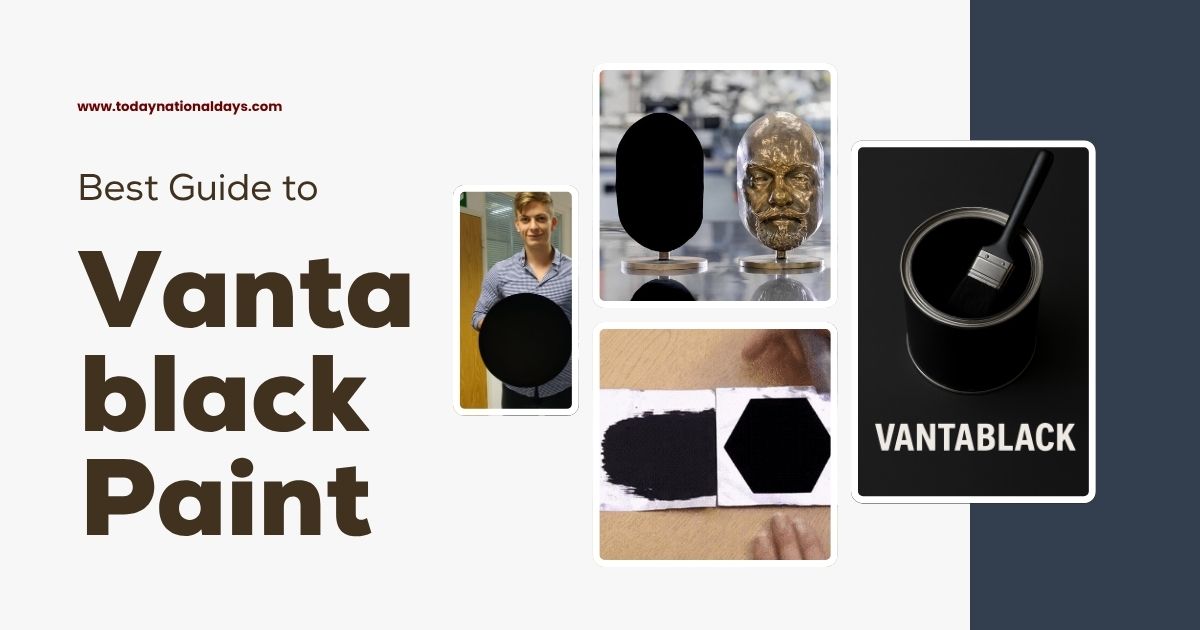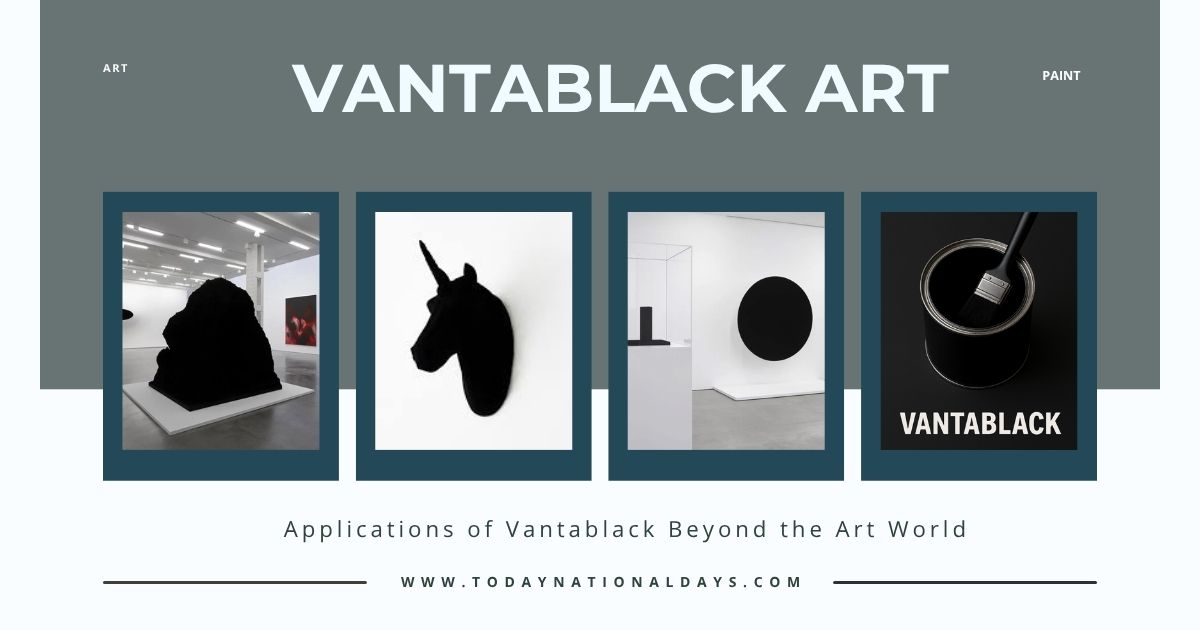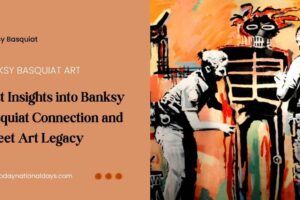
Vantablack paint is known for being one of the darkest artificial substances on Earth, absorbing up to 99.965% of visible light. Created from vertically aligned carbon nanotube arrays, it’s more than just a pigment—it challenges perception, materiality, and artistic convention. In recent years, this cutting-edge material has gained attention not just in science but in creative circles across the UK, where its exclusivity and visual power have sparked both inspiration and controversy.
Artists, engineers, and designers alike are fascinated by Vantablack for its uncanny ability to reduce three-dimensional objects into flat black silhouettes. This article provides detailed, high-quality insights for those interested in how Vantablack paint reshapes visual experience, influences art techniques, and raises important debates within the global creative community.
Top Properties That Make Vantablack Unique Among Pigments
Vantablack isn’t just another shade of black—it redefines how light and material interact. Unlike regular paint, it isn’t composed of traditional pigments suspended in a binder. Instead, it’s made of microscopic carbon nanotubes that trap light through repeated internal reflection.
1. Light Absorption Capabilities
- Vantablack absorbs more than 99.96% of visible light, creating an optical illusion that can make even highly detailed surfaces appear void-like or flat.
- When applied to a contoured or textured object, the visual cues that help define shape and depth disappear, leaving a silhouette that appears more like a shadow than a solid.
2. Technical Composition and Application
- Composed of carbon nanotubes grown on a substrate using chemical vapor deposition (CVD).
- Because of its heat sensitivity and material structure, it’s not applied with a paintbrush but rather through a controlled, industrial process. The original form, known as Vantablack S-VIS, is not commercially available for general use.
3. Thermal and Structural Qualities
- Vantablack is highly heat-resistant and is also used in aerospace and scientific instruments to eliminate stray light.
- It’s fragile—touching or bending the coated surface can damage the nanotube array, unlike conventional paints which have some flexibility.
These unique characteristics have made Vantablack famous for its visual impact, scientific innovation, and artistic controversy.
Table: Comparison of Vantablack with Other Ultra-Black Materials
| Feature | Vantablack (S-VIS) | Black 3.0 (Stuart Semple) | Musou Black (Koyo Orient) | Regular Matte Black |
|---|---|---|---|---|
| Light Absorption | 99.96% | ~98-99% | ~99.4% | 94-97% |
| Application Method | CVD (non-paintable) | Brush/Paint | Brush/Spray | Brush/Spray |
| Availability | Restricted | Public | Public | Public |
| Surface Appearance | Deep void-like black | Matte, slightly reflective | Very matte, less reflective | Smooth but visible texture |
| Usage in Fine Art | Limited/Exclusive | Widely used | Widely used | Common |
Vantablack’s exclusivity and technical challenges make it a material of intrigue, especially when compared to more accessible ultra-black paints developed for artists and designers.
Vantablack in Art: Innovation or Restriction?
The use of Vantablack paint in art circles has sparked widespread debate, particularly due to its exclusivity and licensing. While its visual effect is undeniably powerful, its limited access has raised questions about fairness and artistic freedom.
1. The Anish Kapoor Controversy
- In 2016, British-Indian artist Anish Kapoor secured exclusive artistic rights to use Vantablack S-VIS in artworks, sparking frustration among other artists who felt restricted by the deal.
- This monopoly led to a public response by fellow artist Stuart Semple, who created “Black 2.0” and later “Black 3.0” as protest materials. These alternatives are widely available to all—except Kapoor.
2. Impact on Artistic Expression
- Artists who want to achieve the same depth and void effect must resort to alternatives like Musou Black or Black 3.0.
- Many argue that monopolizing a visual medium stifles experimentation and hinders the free flow of artistic ideas.
3. Conceptual Use in Installations
- Some artists utilize Vantablack to question perception, presence, and reality—central themes in modern art.
The debate continues to shape how the artistic community approaches materials, rights, and the balance between innovation and inclusion.
Applications of Vantablack Beyond the Art World

Although most attention has gone to Vantablack’s aesthetic qualities, its development originated in scientific and military contexts. The material’s light-absorbing and thermal-resistant properties have made it valuable in advanced industries.
Aerospace and Optics
- Vantablack helps reduce stray light in telescopes, cameras, and scientific sensors. This leads to higher image contrast and data accuracy.
- Used in satellite technology and defense systems to manage thermal emissions and internal reflections.
Automotive and Product Design
- Some luxury brands have experimented with Vantablack coatings for concept vehicles or watch dials, giving products a futuristic and dramatic visual edge.
- Its void-like quality creates contrast with metallic or illuminated features.
Architecture and Public Installations
- Architects have tested limited outdoor use in installations where light absorption shapes the structure’s visual narrative.
- While expensive and complex to apply, the results can make buildings or sculptures appear surreal and otherworldly.
Vantablack’s scientific roots continue to expand into new creative fields, though widespread accessibility remains limited due to the specialized application process.
Tips for Artists Who Want to Work with Vantablack-Like Paints
While Vantablack itself isn’t available for most artists, alternatives like Black 3.0 and Musou Black provide similar ultra-black effects without the restrictions. These tips will help artists make the most of these materials.
1. Surface Preparation Is Key
Ensure your surface is clean and primed. These paints work best on smooth, non-absorbent surfaces. A matte primer will improve adhesion and deepen the black effect.
2. Layering Technique Matters
Apply the paint in multiple thin layers rather than one thick coat. Let each layer dry fully to prevent cracking or unevenness.
3. Avoid Glossy Finishes
Ultra-black paints should remain matte to retain their light-absorbing properties. Avoid topcoats unless they are designed specifically for use with flat black paints.
These paints open up expressive options in sculpture, painting, and installation, especially when playing with light and shadow.
Artistic Projects That Benefit Most from Ultra-Black Paints
Ultra-black paints—whether Vantablack or more accessible alternatives—are suited for specific types of creative projects where visual contrast and void aesthetics are essential.
Sculpture and Relief Art
Applying ultra-black to sculpted or 3D surfaces removes depth perception, creating optical illusions. This works particularly well in abstract or conceptual pieces where form and space are themes.
Mixed Media Installations
Artists incorporate ultra-black sections into larger installations to create focal points or transitions between sensory experiences. The result can be immersive and meditative.
Photography and Lighting Design
Some use ultra-black backdrops or props to control reflections and isolate subjects. It’s also popular in experimental photography where depth distortion creates surreal imagery.
These use cases demonstrate that while Vantablack paint is elite in access, its visual concept can still be harnessed creatively by artists across skill levels and disciplines.
Final Thoughts on the Power and Limits of Vantablack in Art
Vantablack paint represents a unique intersection of science, design, and visual art. Its unprecedented light absorption capabilities challenge how we perceive form and depth. While its exclusivity has sparked valid criticism, the creative conversation it generates continues to grow.
Artists in countries like the UK or Australia can use high-quality alternatives to maintain their artistic potential despite limited access. As the debate between exclusivity and creative freedom evolves, Vantablack remains a powerful symbol of both innovation and controversy in contemporary art.
FAQ About Vantablack Paint
Is Vantablack available for public purchase?
No, the original Vantablack S-VIS requires a special application process and is currently not available for general artistic use.
What is the darkest paint available to artists today?
Musou Black and Stuart Semple’s Black 3.0 are among the darkest commercially available paints.
Why is Vantablack not applied with a brush?
Its nanotube structure requires a chemical vapor process that cannot be brushed or rolled like traditional paint.
Can Vantablack be used outdoors?
Its durability is limited; prolonged exposure to the elements may damage the nanotube structure.
Is Vantablack toxic?
Vantablack is generally safe under controlled conditions, but applying it requires lab-level safety procedures.






